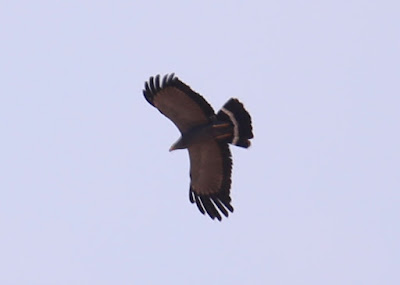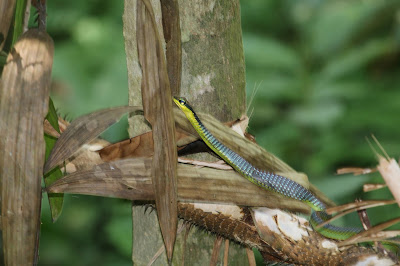Giant Kingfisher -
Megaceryle maxima
The frequency of posts to this site have dwindled and almost died. The Task however lives on through 2017 a large number of photos were taken in my travels - I just seem to lost my voice for posting them up - and I guess I am bit disheartened by not having them all in one place.
Its no reason to give up though so I will kick off 2018 with a retrospective to a beautiful trip to Zambia. I always planned to treat myself and Jane to a Safari at some point without the kids. If only to see what retirement like look like. They are both boarding now in the UK so really there are no restraints on travel other than the wallet and work. So a few weeks after the "little one" started at his new school in the UK I dragged his Mum kicking and screaming to the South Luanga National Park. More specifically a nice high end Safari lodge called
Chinzombo. Absolute indulgence - 5 days and nights of fabulous dining, gin and tonics, private game drives, wild dogs (more of them in later posts) and animals and birds and well just Africa.
Nobody looks at this site but me so I write this almost as a diary. Two previous Safari experiences to Tanzania can all be found on the "lost site" - Neil's Daily Bird on the link above on the cross bar. It been a while though - 2013 we were in
Ruaha National Park for 5 days and 2012 was our first Safari taking in
Lake Manara,
Ngorogoro Crater and then the gorgeous
Serengeti. Africa and Safari more particularly gets under your skin. Its like Xmas with animals - at least it is the way I like to do it.
I don't drive a fancy car for Dubai standards and these days I can't claim even to eat out once a week. A normal weekend involves 3-4 hours work and most days see me in the office for 10-12 hours. I save my money but every year I am more than happy after school fees to pay for a couple of really fabulous holidays and make sure that everyone gets a break and some memories are laid down. I met a bloke in the Serengeti - perhaps we only crossed paths in camp for a night or two but gave a small speech over a glass of wine at dinner that revolved around the importance of holidays - especially for families which in essence are on borrowed time as the years roll by.
That promise to the whole family remains and last year we made it to the US and previous years have taken in the
Seychelles,
Vancouver Island,
Sri Lanka, Mauritius and safaris. Have scattered a few links to some holiday birding posts. I can see now the opportunity to take a quick trip without the boys each year - whether thats a European City for a spot of high culture and food or lovely but different a trip out on safari - plenty of plans for tigers, wales, gorillas. I don't fancy looking at pictures of Porsche or a Ferrari while sitting in my sheltered housing at 90 (touch wood). It going to be heaps of pictures of bird and safari lodges, eco lodges, rainforests, rivers, mountains and animals.
So this Giant Kingfisher was photographed on our last game drive along the Luango river after a fabulous 5 days. A kingfisher almost the size of a small crow. One can only imagine the size of fish that this individual is taking on !
This is much a post for myself to remind myself where my site is and how to post up the photos and so on. I will get back into the swing of this but for now it might be enough just to get a few birds under my belt. Maximus below as we might call him is as good a place as any to start. Very stop of that safari truck a precious new bird. How many more stops on the way to complete the task ? Thousands. Any good to be back
Giant Kingfisher,
Megceryle maxima
South Luanga National Park
Zambia
November 2017







































